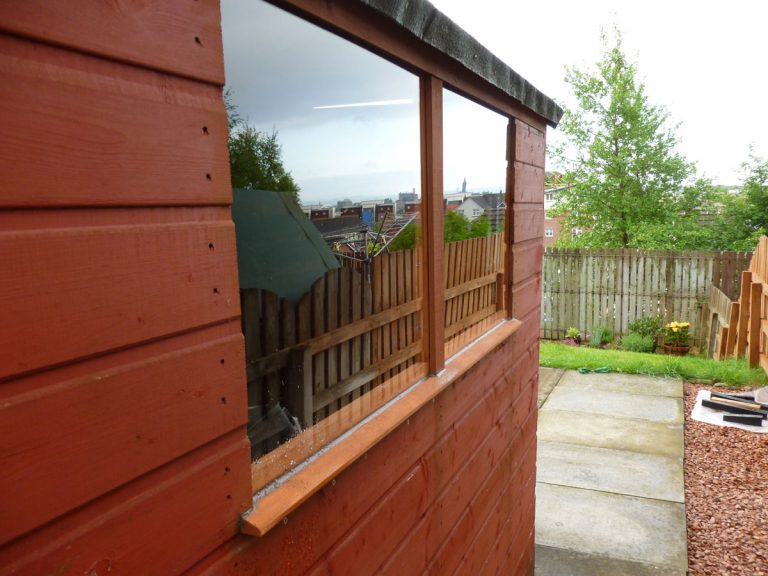Acrylic is a versatile sheet plastic material which can be used in all kinds of domestic and commercial projects. But how well does it work with other materials such as glass, wood, metal and other plastics? In this guide we are going to tackle this big question and go through some tips of how to use acrylic with other materials.

Glass & Acrylic
Acrylic is often used alongside glass. They behave much in the same way as each other, but acrylic is far lighter which has many advantages where weight and ease of handling are a concern. One of the most frequent uses of acrylic with glass is in the construction of custom aquariums, or where acrylic partitions are installed in existing tanks.
Wherever the glass and clear acrylic are being used, it is imperative that both materials are thoroughly cleaned before they are bonded. All grease, dust and other contaminants must be removed so the glue is not undermined in any way. Use a cleaner which is approved for use with acrylic – please note than some solvents may damage the surface of the material, so care must be taken.
Epoxy glues and adhesives suitable for use with plastics may be used. Standard silicone may also be used, but it is unlikely that it will hold in the long term especially in high moisture environments.
Follow all manufacturer’s instructions on the glue and allow it to cure for as long as is needed (as long as five days in some cases)
Wood & Acrylic
Acrylic can be effectively used with wood as an alternative to glass. This might be in the installation of secondary glazing, shed windows, boat windows, or the construction of display cabinets in aesthetic applications.
The two materials may be bonded with glue or screwed together – both methods delivering excellent results.
To screw acrylic sheet to wood use a drill bit that is suitable for use with plastic to drill holes, taking care not to let the plastic overheat. Apply an even pressure so the plastic doesn’t crack or split and allow the bit to cool between holes. Screw the acrylic to the wood using wood screws until the head of the screw is flush with the surface of the acrylic. Take care not to over tighten the screw because the plastic will crack.
The glue acrylic to wood, use an epoxy as it does not require a chemical reaction to bond the materials together. Give the epoxy a rough surface to hold on to by using a medium grit sandpaper on the wood. Clean the surface of the plastic thoroughly before applying a thin layer of epoxy according to the manufacturer’s instructions, then clamp the materials together until the glue has set.
Metal & Acrylic
It is not often that acrylic needs to be glued to metal, but it is possible. In low pressure environments, and where there will not be large loads placed on the join, acrylic and metal may be glued together.
A two-part epoxy should be used, as these were developed for use with metals in heavy duty applications. A fully cured two-part epoxy will have excellent hardness and provide a tough protective coating with good heat resistance.
When gluing acrylic to metal, both materials should be roughed in the areas being bonded to give the glue a good surface to hold on to. Acrylic may be treated much in the same way as wood with a medium-grit sandpaper, and wire wool or a file may be used on the metal.
Follow the manufacturer’s instructions on the epoxy to achieve best results, allowing the glue to cure fully before use.

Other Plastics & Acrylic
Bonding acrylic to acrylic, or other plastic materials such as polycarbonate or foamex is relatively simple. The kind of adhesive you use will depend on the application and how much stress will be placed on the join, and of course all adhesives must be suitable for use with plastics so always read the manufacturer’s instructions carefully.
Where there will be little stress placed on the join, such as in signage applications for example, tape may be used to bond plastics together. Thanks to the light weight of acrylic and many other sheet plastics even double sided sticking tape may be used, though the join will unlikely survive in the long term or where there is moisture present.
For a stronger join, acrylic cements and other plastic-safe adhesives may be used. Whenever you are gluing acrylic it is key that contaminants such as grease and dust are removed. If left, they may undermine the strength of the glue so consider using a plastic cleaner to thoroughly clean the materials.
Once again follow the manufacturer’s instructions carefully on the adhesive, and ensure the glue is left to set for the recommended length of time.
Bonding acrylic to other materials is, in most cases, a simple process. It is a very versatile material that is used in a variety of applications and this is due largely to the fact that it reacts very well to many widely used adhesives. If proper care is take, acrylic can be bonded successfully to glass, wood, metals and other plastics to suit your requirements.
For more information on Acrylic, Perspex, MDF, Dibond and Polycarbonate please visit our Guide and Blog sections of the website.
Cut Plastic Sheeting are based on the south Coast in Ivybridge, Devon UK. We have a full manufacturing facility which enables us to offer Cut To Size Acrylic as well as Cut To Size MDF. Shop our full range of products, including our Clear Acrylic, coloured acrylic and more recent MDF Wood Sheet ranges.
Our Team are always here to help with any enquiry, please send us an email or for more urgent needs give us a call – Contact Us



